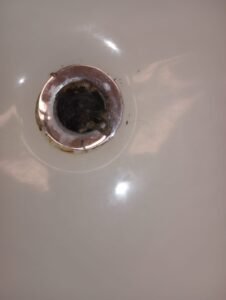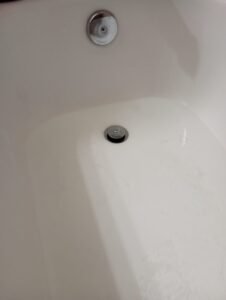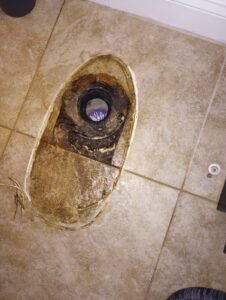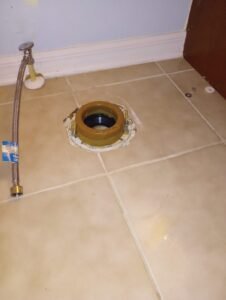How to Deal with Nasty Sewer and Drain Issues?
Welcome to the Plumbing Therapist blog! Today, we dive deep into the world of sewer and drain issues, uncovering tips, solutions, and expert advice to keep your plumbing system flowing smoothly. Say goodbye to clogs and backups as we guide you through the essential know-how for a trouble-free drainage experience. Whether you’re a homeowner or a business owner, understanding and addressing sewer and drain issues is crucial to maintaining a functional and hygienic environment. Let’s embark on this journey to plumbing enlightenment and ensure your pipes remain in tip-top shape.
Understanding Your Home’s Plumbing System
Before we dive into maintenance and repair, let’s get to know the plumbing system within your home. Plumbing Therapist believes that informed homeowners make better decisions about their plumbing needs. Key components include:
- Drains: These are responsible for carrying wastewater away from your sinks, showers, bathtubs, and appliances.
- Sewer Lines: These larger pipes transport sewage from your home to the municipal sewer system or septic tank.
- Vent Pipes: They provide air to the plumbing system, allowing wastewater to flow smoothly.
- Traps: These are essential for preventing sewer gases from entering your home.
- Cleanouts: Access points for maintenance and repair.
The Importance of Sewer and Drain Maintenance
As Plumbing Therapist, we understand the vital importance of sewer and drain maintenance. Here are some key reasons why regular maintenance of your drains and sewer system is crucial:
- Preventing Blockages: The sewer and drain system can easily become clogged over time due to the accumulation of grease, hair, debris, and even tree roots infiltrating the pipes. Regular maintenance helps in identifying and clearing these blockages before they lead to major issues.
- Avoiding Costly Repairs: Neglecting sewer and drain system maintenance can result in significant damage to your plumbing system. This can lead to expensive repairs or even the need for full pipe replacements. Routine maintenance is a cost-effective way to prevent these larger issues.
- Preventing Sewage Backups: A blocked sewer line can cause sewage to back up into your home, creating unsanitary and hazardous conditions. Regular maintenance helps ensure that your sewer lines are clear and functioning properly to prevent such emergencies.
- Maintaining Healthy Indoor Air Quality: A poorly maintained sewer system can release foul odors and harmful gases into your home. Proper maintenance, including vent stack inspection and cleaning, helps maintain a healthy indoor environment.
- Extending the Lifespan of Plumbing: Regular maintenance can significantly extend the lifespan of your plumbing system. By addressing minor issues before they become major problems, you can avoid premature replacements and save money in the long run.
- Protecting the Environment: A well-maintained sewer system is less likely to leak or release contaminants into the environment. This helps protect local water sources and ecosystems.
- Compliance with Local Regulations: Many local jurisdictions have regulations in place that require property owners to properly maintain their sewer systems. Neglecting maintenance can lead to legal issues and fines.
At Plumbing Therapist, we offer a range of services, including drain cleaning, sewer inspection, and preventive maintenance plans, to ensure that your plumbing system remains in top condition. Our goal is to help you avoid plumbing emergencies, save money, and maintain a safe and healthy environment in your home.

Signs of Trouble in the Sewer and Drain System
Recognizing the signs of trouble with your sewer and drain system is essential to prevent major plumbing issues. As Plumbing Therapist, we want to help you identify these signs early. Here are common indicators that you may be experiencing problems with your sewer and drain system:
- Slow Draining: If you notice that your sinks, showers, or tubs are draining slowly, it could indicate a partial blockage in the pipes. This is a common early sign of trouble.
- Foul Odors: Unpleasant odors coming from drains, toilets, or around your property can be a sign of sewer line issues. Sewage gases escaping from damaged pipes can cause these odors.
- Gurgling Noises: If you hear gurgling or bubbling sounds when you flush the toilet or use a sink, it may indicate a blockage or venting problem within the drain and sewer system.
- Multiple Clogs: Frequent clogs in different drains throughout your home could be a sign of a more significant issue within the main sewer line.
- Water Backups: Water backing up into sinks, tubs, or toilets when you use a different plumbing fixture is a clear indication of a sewer line blockage or other problems.
- Sewage in the Yard: If you notice sewage or wastewater pooling in your yard, it’s a severe sign of a sewer line issue that requires immediate attention.
- Cracks in foundations or Walls: In some cases, a damaged sewer line can lead to moisture in your foundation or walls, causing cracks or other structural issues.
- Lush, Greener Grass: A section of your yard that’s notably greener or more lush than the rest may be receiving extra moisture from a leaking sewer line below.
- Rodent or Insect Infestations: Pests like rodents and insects are attracted to sewer leaks. If you suddenly have a pest problem, it could be linked to a sewer issue.
- Changes in Toilet Bowl Water Level: A fluctuating water level in your toilet bowl, especially when not in use, can indicate a problem with the sewer line or plumbing system.
If you notice any of these signs, it’s crucial to address them promptly. Ignoring sewer and drain issues can lead to more significant problems and costly repairs down the line. Contact a professional plumbing service like Plumbing Therapist to inspect your system, diagnose the problem, and recommend the necessary repairs or maintenance. Early intervention can save you time and money in the long run.

DIY Maintenance and Minor Repairs of the Sewer and Drain System
Plumbing Therapist encourages homeowners to take proactive steps in maintaining their drains and sewers. Here are some DIY tips:
- Use a plunger to clear minor drain clogs. Ensure a good seal around the drain and plunge vigorously.
- Make a homemade drain cleaner using a mixture of baking soda and vinegar. Pour it down the drain, let it sit for 30 minutes, and then flush with hot water.
- Turn off the water supply to the faucet.
- Replace worn-out or damaged washers, O-rings, or seals inside the faucet. You can find replacement parts at most hardware stores.
- Reassemble the faucet and turn the water supply back on to check for leaks.
- If your toilet is constantly running, the flapper may need replacement.
- Turn off the water supply to the toilet and flush to empty the tank.
- Remove the old flapper and install the new one according to the manufacturer’s instructions.
Tightening Loose Fixtures:
- Check for loose faucets, showerheads, or pipe brackets.
- Use a wrench or pliers to tighten the fixtures. Be careful not to overtighten and damage the fixture.
Sealing Leaky Joints:
- If you notice small leaks around pipe joints, you can use a plumber’s tape or pipe joint compound to seal them.
- Clean the area and apply the tape or compound as directed.
Insulating Pipes:
- In cold climates, insulate exposed pipes to prevent freezing. Use foam pipe insulation sleeves or wrap pipes with heat tape.
- Upgrading your showerhead is a simple DIY project that can improve water efficiency and water pressure.
- Remove the old showerhead and install the new one, using the plumber’s tape to ensure a watertight seal.
- If your faucet has reduced water flow, remove and clean the aerator.
- Soak it in vinegar to remove mineral deposits and debris, then reattach it.
Checking for Toilet Tank Leaks:
- Add a few drops of food coloring to the toilet tank. If the color appears in the bowl without flushing, you may have a leak that needs fixing.
Regular Maintenance:
- Schedule periodic checks of your plumbing system, looking for signs of leaks, corrosion, or wear and tear. Address any issues promptly.
Remember that while these DIY tips can handle many minor plumbing issues, it’s essential to know your limits. If you’re unsure about a repair or if a problem is beyond your expertise, it’s best to call a professional plumbing service like Plumbing Therapist to avoid causing further damage or creating more significant issues.

How to Deal with Nasty Sewer and Drain Issues: 6 Quick Fixes
Dealing with nasty sewer and drain issues can be unpleasant, but there are some quick fixes you can try before calling in the professionals from Plumbing Therapist. Here are six steps to tackle common sewer and drain problems:
- Use a Plunger: For minor drain clogs in sinks, tubs, or toilets, a plunger can be your best friend. Ensure a tight seal and plunge vigorously to dislodge the blockage.
- Baking Soda and Vinegar: Mix a cup of baking soda with a cup of vinegar and pour it down the drain. Wait for about 30 minutes, then flush with hot water. This can help break down minor clogs.
- Boiling Water: For grease-related clogs in kitchen drains, boil a pot of water and pour it down the drain. The hot water can melt and wash away grease buildup.
- Chemical Drain Cleaners (Use with Caution): Commercial drain cleaners can be effective for some clogs. Follow the instructions carefully, and use them sparingly to avoid damage to pipes.
- Remove Hair and Debris: In bathroom drains, hair, and soap scum are common culprits for clogs. Use a drain snake or a bent wire hanger to pull out hair and debris from the drain.
- Check P-Trap: Under sinks, there’s a P-trap that can trap debris. Place a bucket under it, remove the trap, and clean out any blockages. Be sure to reassemble it properly.
While these quick fixes can resolve minor issues, they may not be effective for more severe blockages or sewer line problems. If your efforts don’t yield results or if you encounter persistent, foul-smelling sewage backups, gurgling noises, or multiple clogged drains, it’s time to call in the experts from Plumbing Therapist.
Our trained professionals have the tools and expertise to diagnose and resolve even the nastiest sewer and drain issues efficiently and safely. Don’t hesitate to contact us for thorough inspections and long-term solutions to keep your plumbing system running smoothly. Your home’s health and hygiene depend on it.
When to Call the Experts
Dealing with sewer and drain problems can be a frustrating experience for any homeowner. While some issues can be resolved with simple DIY solutions, there are situations where it’s essential to call in the experts from Plumbing Therapist to avoid further damage and ensure a thorough fix. Here are scenarios when expert assistance is crucial for sewer and drain issues:
- Persistent Blockages: If you have a stubborn or recurring drain blockage that plunger or chemical drain cleaners can’t fix, it’s time to call professionals. It could be a sign of a deeper issue in your sewer line.
- Multiple Clogged Drains: When multiple drains in your home are clogging simultaneously, it may indicate a main sewer line blockage. This requires specialized equipment and expertise to address.
- Sewage Backups: Sewage backups are not only unsanitary but also pose health risks. If you notice wastewater coming up from drains or toilets, contact experts immediately to prevent contamination and further damage.
- Unpleasant Odors: Foul odors emanating from your drains or sewer vents suggest a problem within your sewer system. Professionals can identify and address the source of these odors.
- Slow Drainage: Slow-draining sinks, showers, or tubs may be a symptom of a partial blockage or a damaged sewer line. Experts can perform camera inspections to diagnose the issue accurately.
- Gurgling Sounds: If you hear gurgling or bubbling noises when you use plumbing fixtures, it could be due to improper venting or sewer line issues. Professionals can assess and resolve this.
- Tree Root Intrusion: If you suspect tree roots are infiltrating your sewer pipes, it’s crucial to address the problem promptly to prevent further damage. Experts can use specialized equipment to clear roots and repair pipes.
- Old or Deteriorating Pipes: Aging sewer and drain pipes can become weakened, leading to leaks or collapses. Professionals can assess the condition of your pipes and recommend necessary repairs or replacements.
- Safety Concerns: Dealing with sewer and drain issues can involve handling hazardous materials and gases. Trained experts have the knowledge and equipment to work safely and prevent health risks.
- Complex Repairs and Installations: For major repairs or installations involving sewer and drain systems, such as replacing a sewer line or installing a new drainage system, professionals are equipped to handle the complexities and ensure compliance with local regulations.

Preventive Maintenance Plans
At Plumbing Therapist, we understand the importance of preventive maintenance for your sewer and drain system. Our Preventive Maintenance Plans are designed to ensure the longevity and efficiency of your sewer and drain infrastructure. Here are the key components of our Preventive Maintenance Plans for sewers and drains:
- Regular Inspections: We schedule routine inspections of your sewer and drain lines to identify any signs of blockages, leaks, or deterioration. Early detection of issues is crucial for preventing major problems.
- Drain Cleaning: Our plans include scheduled drain cleaning services. We use professional equipment to remove debris, grease, and sediment buildup from your drains, ensuring smooth and efficient drainage.
- Sewer Line Camera Inspection: We perform camera inspections of your sewer lines to pinpoint any potential issues, such as tree root intrusion, cracks, or blockages. This advanced technology allows us to assess the condition of your sewer lines accurately.
- Hydro Jetting: For stubborn blockages and root intrusion, our plans may include hydrojetting services. High-pressure water jets are used to clear obstructions and clean the interior of the sewer lines.
- Preventive Root Treatment: If tree roots are a recurring issue in your sewer lines, we can apply preventive root treatments to inhibit root growth and reduce the risk of blockages.
- Grease Trap Maintenance: If your property has a grease trap, we’ll inspect and clean it as part of our plan. Proper grease trap maintenance is essential for preventing sewer line clogs.
- Septic System Maintenance: For properties with septic systems, we offer septic tank inspections, pumping, and maintenance to ensure your system functions smoothly and avoids backups.
- Emergency Services: Our plans often include priority access to emergency sewer and drain services. In case of a sudden blockage or backup, you’ll receive prompt assistance.
- Water Quality Assessment: We can assess the quality of water in your drains to detect any signs of contamination or unusual substances that may be affecting your sewer system.
- Customization: We understand that every property’s sewer and drain system is unique. Our Preventive Maintenance Plans can be customized to address specific concerns or requirements you may have.
- Documentation: We provide detailed reports after each inspection and maintenance service, keeping you informed about the condition of your sewer and drain system.
By investing in our Preventive Maintenance Plans for sewers and drains, you can avoid costly repairs, backups, and property damage. Regular maintenance ensures that your sewer and drain system operates efficiently and reliably, giving you peace of mind.
Partner with Plumbing Therapist for Effective Solutions to Nasty Sewer and Drain Issues
In conclusion, when you’re faced with the unpleasant challenges of sewer and drain issues, it’s reassuring to know that quick fixes can often provide relief for minor problems. However, for persistent, foul-smelling backups, unusual noises, or recurrent clogs, the experts at Plumbing Therapist are just a phone call away.
Our team of experienced professionals is equipped with the knowledge, tools, and expertise to handle even the nastiest sewer and drain issues efficiently and safely. We understand the importance of a clean, functional plumbing system for your home’s health and hygiene.
So, don’t let sewer and drain problems dampen your day. Contact Plumbing Therapist for a thorough inspection and long-term solutions, ensuring your plumbing system runs smoothly and your peace of mind remains intact. Your home deserves the best care, and we’re here to provide it.
